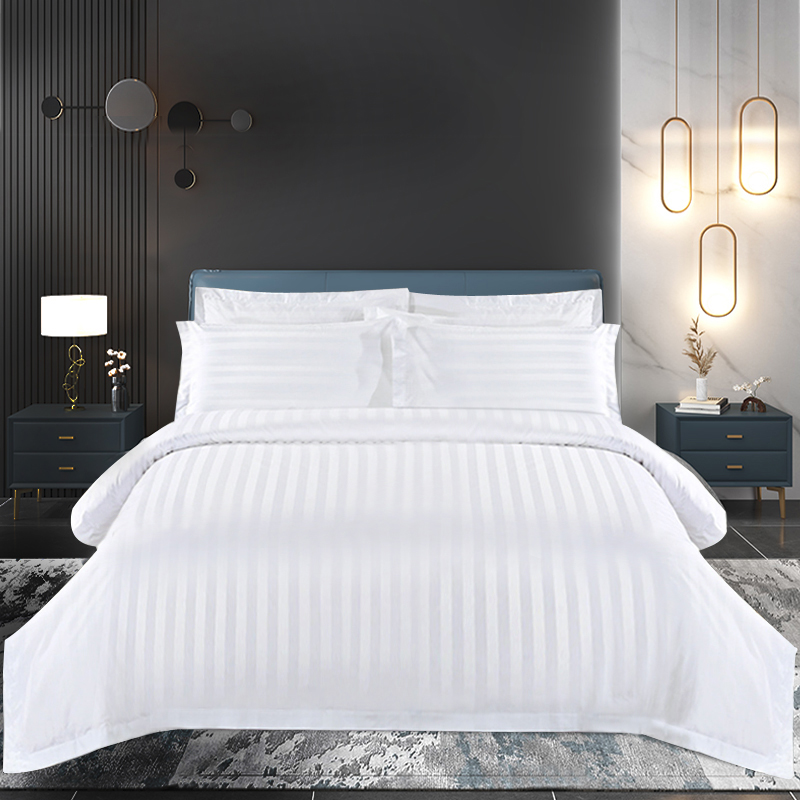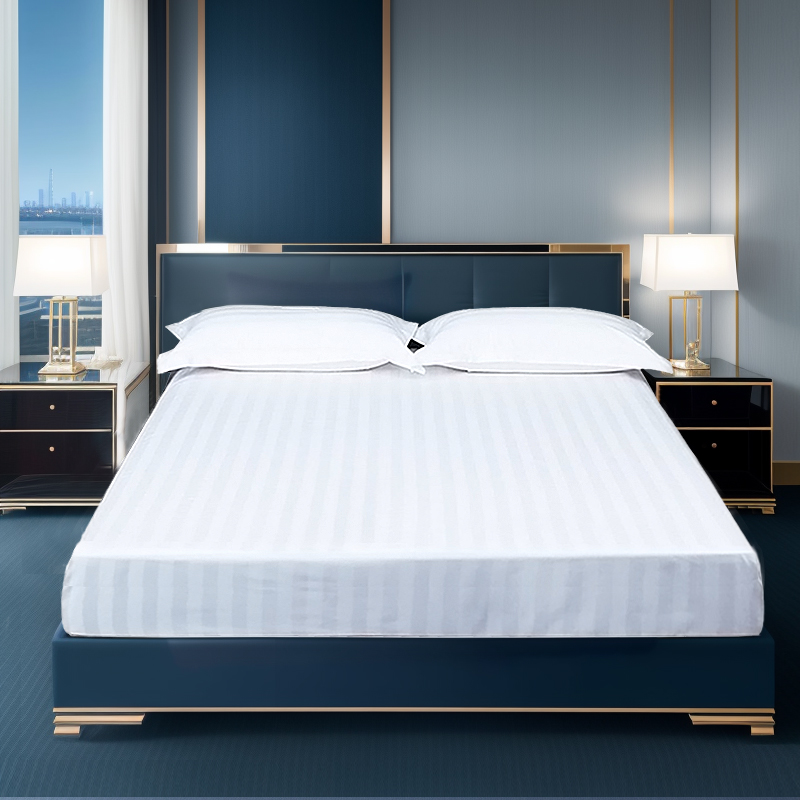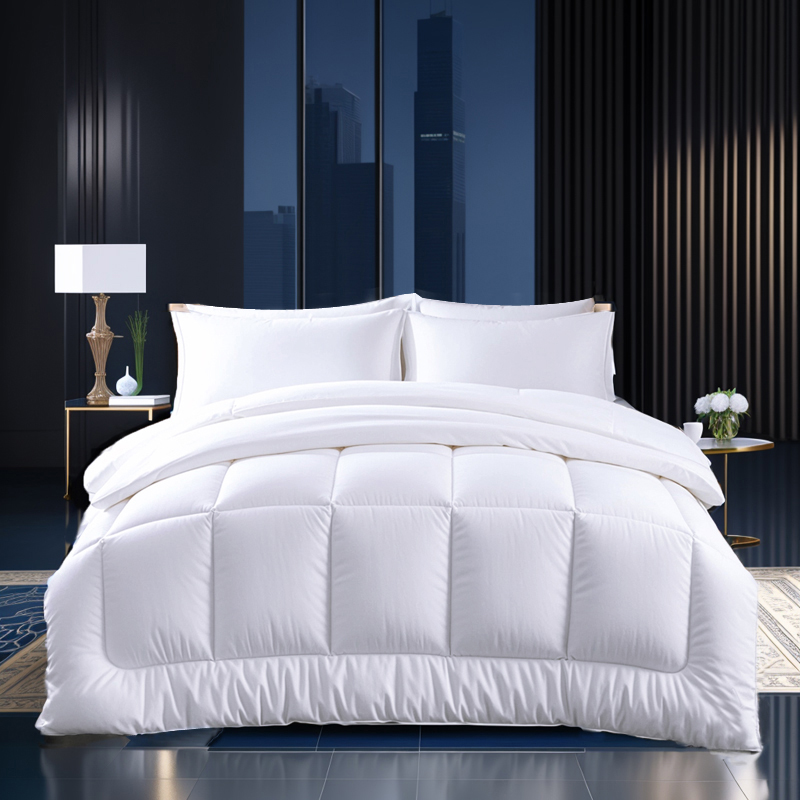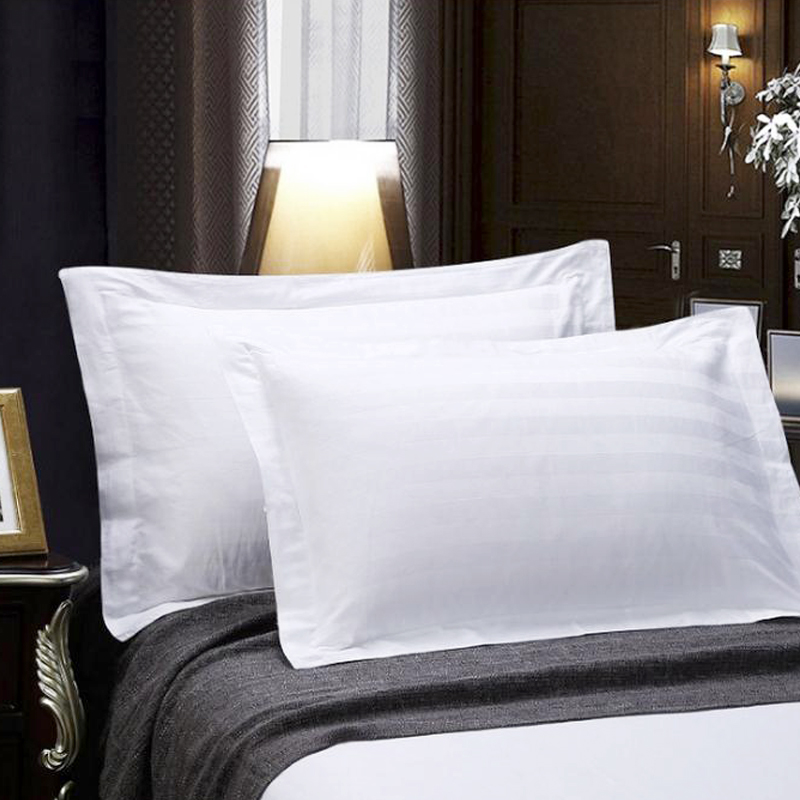How is a thick striped pillowcase pre-shrinked to prevent deformation after washing?
Release Time : 2025-10-10
During the production process of thick striped pillowcases, shrinkage is required to balance yarn tension and stabilize the fabric structure to prevent stripe deformation and dimensional instability caused by fabric shrinkage after washing. The core approach involves mechanical shrinkage, chemical treatment, and process optimization, combining fabric characteristics with stripe design requirements to form a multi-layered solution.
Mechanical shrinkage is a key step in the shrinkage process for thick striped pillowcases. This process physically conditions the fabric using a shrinking machine, involving moistening, mechanical compression, and loose drying. First, steam or spraying is used to evenly absorb moisture from the fabric, activating the fiber's swelling properties. Next, a rubber blanket and pressure rollers are used to apply mechanical pressure in the warp direction, increasing the yarn's buckling wave height and simulating the shrinkage experienced after washing. Finally, loose drying is used to set the fabric in a tension-free state, ensuring stable inter-yarn friction and thus securing the adjusted dimensions. This method effectively reduces fabric shrinkage to below 1%, while enhancing fabric softness and preventing stripe distortion caused by uneven shrinkage.
Chemical cross-linking modifies the fiber's molecular structure. For thick striped cotton pillowcases, chemical crosslinking agents (such as resin finishes) can be added to form a crosslinked network on the fiber surface, limiting the fiber's swelling after moisture absorption. This treatment reduces changes in warp and weft yarn diameter during washing and maintains the stability of stripe spacing. This treatment is particularly suitable for viscose blended pillowcases, specifically addressing excessive shrinkage. Chemical treatment requires strict control of the additive concentration and reaction conditions to avoid affecting the fabric's breathability and feel.
The relaxation shrinkage process achieves natural shrinkage by controlling environmental conditions. After padding the thick striped pillowcase with warm water or steam, it is slowly dried in a relaxed state, allowing the warp and weft yarns to shrink simultaneously. This method relies on the fiber's swelling-drying cycle, reducing internal stress by extending the drying time. It is suitable for fabrics sensitive to mechanical compression. During operation, the ambient temperature and humidity must be stable to prevent excessive drying in certain areas, which may cause stripe shifting. Fabric tension should be adjusted using guide rollers to maintain stripe verticality.
Thermosetting technology uses high-temperature treatment to fix the fabric's shape. After shrinking, the thick striped pillowcase is placed in a setting machine and treated at appropriate temperature and tension for a specified period of time to permanently set the yarn's buckling state. This process eliminates residual stress generated during weaving and shrinking, enhancing dimensional stability. For striped areas, a segmented setting technique is used, adjusting the temperature and time for different density areas to prevent stripe deformation due to differential thermal shrinkage.
Optimizing process parameters is key to shrinking. During production, the shrinking machine speed, fabric moisture regain, and steam pressure must be strictly controlled. Excessive speed will result in insufficient shrinkage, while too slow may cause excessive shrinkage. Fluctuations in moisture regain can affect fiber swelling, requiring precise adjustment using a spray system. Stable steam pressure ensures consistent mechanical compression. Furthermore, controlling the fabric feed tension is crucial. The gap between the feed roller and the backing roller must be adjusted according to the fabric thickness to avoid stripe distortion caused by uneven tension.
Quality inspections are conducted throughout the shrinking process. Shrinkage testing is used to verify treatment effectiveness, ensuring that dimensional change after washing meets standards. Stripe clarity testing equipment is used to assess pattern integrity to prevent blurring or altered spacing caused by pre-shrinkage. For substandard products, the cause is analyzed and process parameters adjusted. For example, fish-scale spots may be caused by aging of the rubber blanket or uneven pre-shrinkage, requiring replacement of equipment components or optimization of moisture supply.
Pre-shrinkage treatment for thick striped pillowcases achieves both dimensional stability and enhanced stripe aesthetics. A combination of mechanical pre-shrinkage and chemical treatment fundamentally reduces shrinkage risk. Relaxation pre-shrinkage and heat setting physically consolidate the effect. Process parameter optimization and quality testing ensure production control. This system not only extends the life of the pillowcase but also maintains the decorative value of the stripe design, satisfying consumers' demands for both quality and aesthetics.







